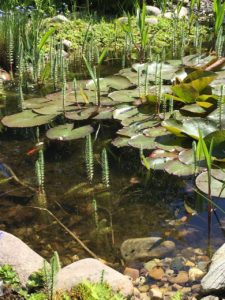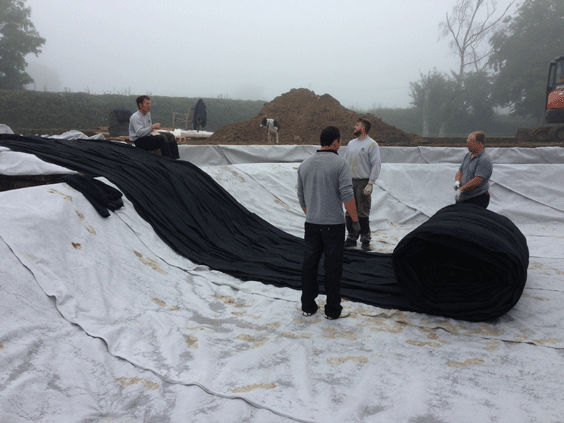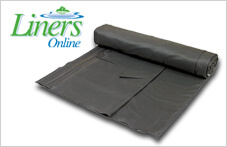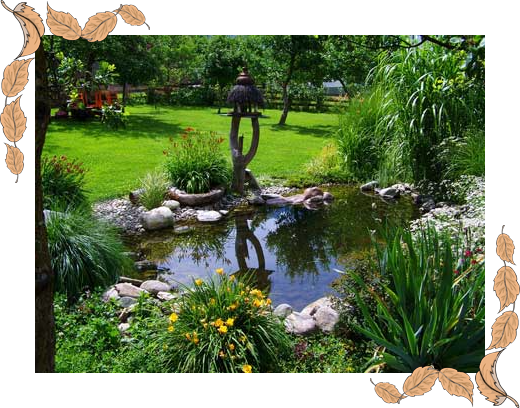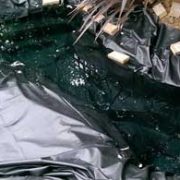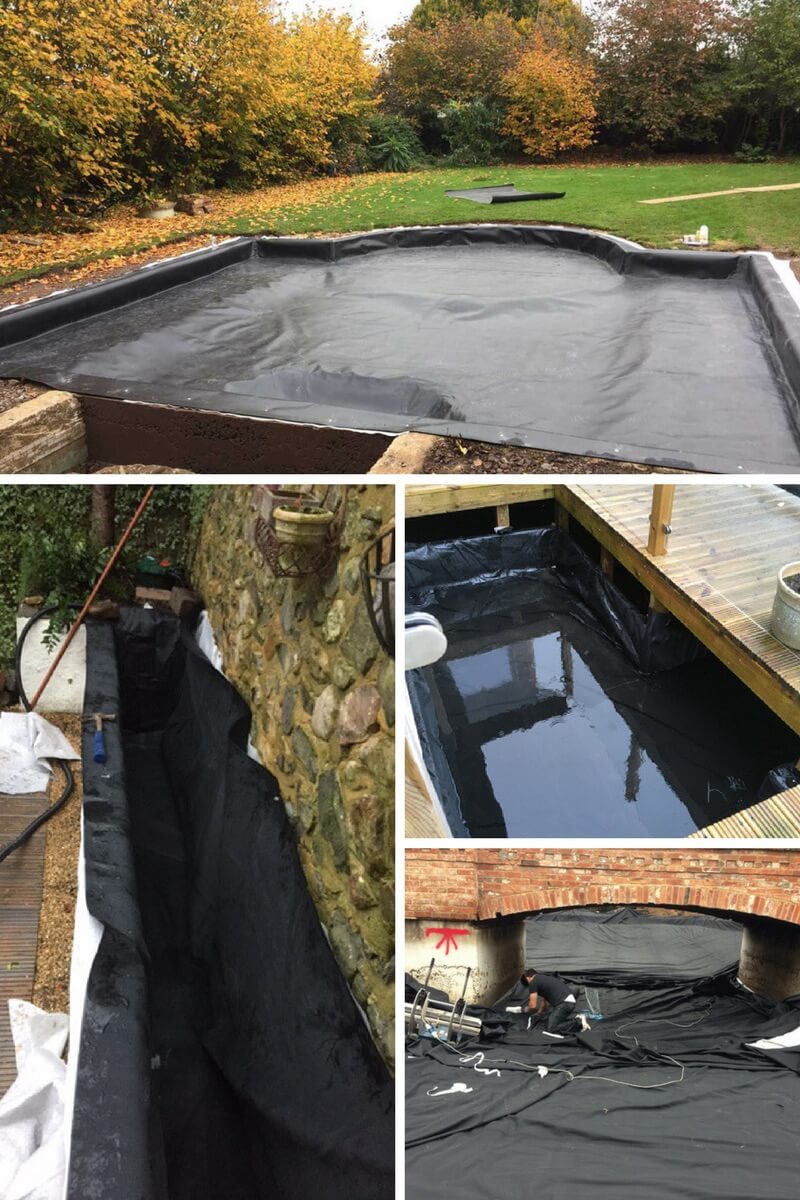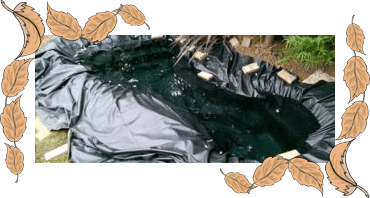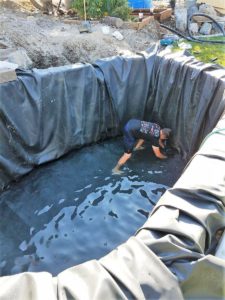Fish pond and general garden pond designs have no limitations when it comes to creativity. Rubber pond liners are flexible and allow for many bespoke styles to suit both garden and the purpose for which a pond is being built. Deciding on where to site your pond, style, size and depth of pond should very much be guided by whether your pond is to home Koi fish, aquatic plants or for the purpose of providing water and a home for wild life.
So, why does the purpose of a pond dictate the design of a pond build? Wildlife needs easy access into the water and an exit route to avoid drowning, the presence of Herons could cause havoc to a fish pond so slopping sides should be avoided and aquatic plants need shelves upon which baskets can be placed and lastly, easy access to a pond for maintenance purposes also needs to be considered.
Pond designs and fish survival
Fish ponds can either be of a formal rectangular design or steep-sided creative styles with curves and plinths. If lined with a rubber pond liner, there is no real limitation as to what can be achieved. Butyl and Epalyn rubber pond liners can be fabricated into a tailored-to-fit or box-welded pond liner for steep-sided square or rectangular designs or they can be readily moulded into the contours of a more rounded kidney shaped or similar pond design. Vertically sided pond designs do, to some extent deter heron from feeding off Koi or gold fish. But this is not an absolute guarantee. Although steep sided ponds do pose a challenge to Heron, they are determined and patient creatures and are known to stand as still as a log watching and waiting for a fish to swim to the surface for an easy picking!
If herons become a persistent problem to your fish pond and you have tried alternative deterants such as netting or enclosed wire grids then turning your pond into a wildlife haven maybe the best alternative. Unless, of course you are willing t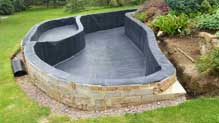 o try a redesign with steep sides, greater depth and inclusive of rocks and bolders positioned in such a way as to create a place for fish to hide when they feel threatened.
o try a redesign with steep sides, greater depth and inclusive of rocks and bolders positioned in such a way as to create a place for fish to hide when they feel threatened.
What do we know about Herons and a fish pond?
- They eat predominantely fish, but also love amphibians, small mammals, worms and small birds.
- They fish mainly at dawn or dusk – a time when fish are also the most active. This is why their visit to a fish pond often goes unnoticed (unless of course you are up and about very early!)
- They visit garden ponds for easy pickings particularly at the start of the breeding season or harsh weather conditions when their usual food supply dwindles.
- A fish pond located near canels, lagoons. lakes or other water sources that are home to Heron are most vulnerable to their visits.
- They are a protected species in the UK
- Herons nest in tree tops
- They can appear to be quite arrogant – noice and movement is not always enough to deter them away from a pond.
Steep sided raised ponds are the safer option for keeping fish. No matter what the shape there really is no limit to what can be achieved when you line with a Butyl or Epalyn pond liner. The brick work creates a very appealing finish. Geotextile protective underlay and pond liner need to be secured in place once the build is complete. This can be done by securing them in place with metal rivets hammered into the brick work, as seen in this photograph.
For more information about pond liners, tailored-to-fit pond liners or about installing a pond liner into a deep, steep-sided pond then please visit our Pond Liners website or contact us on 01526 399 033






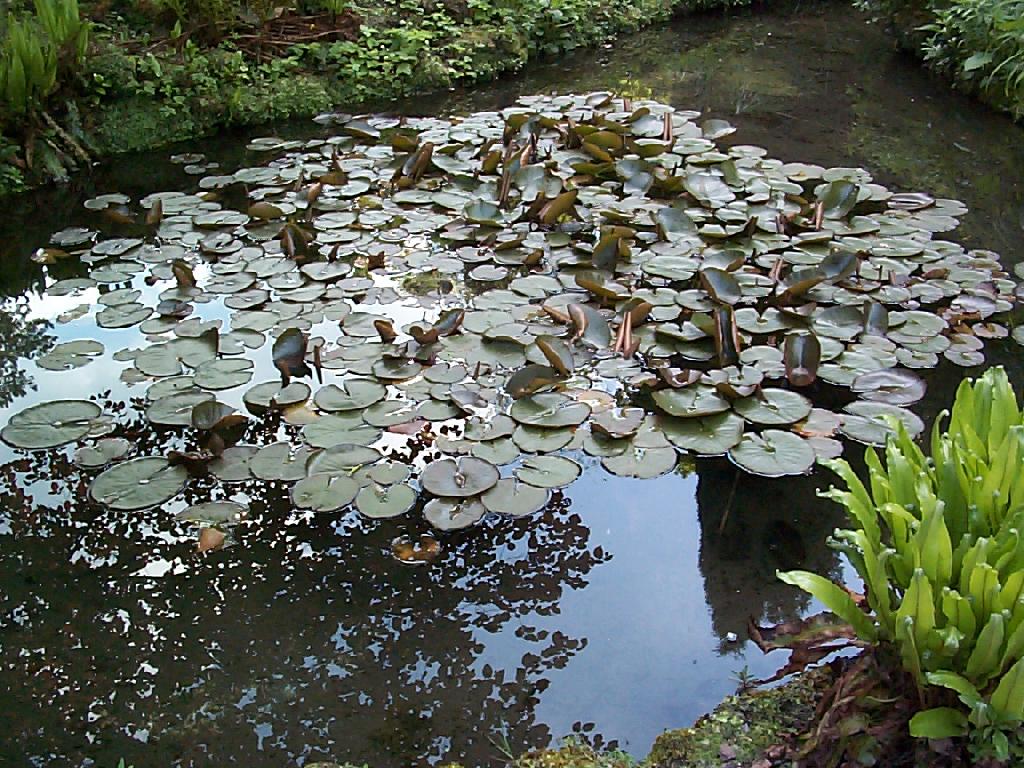 all pond and you risk spending a lot of the summer having to cut back to allow sufficient light to your pond. Plants thrive when planted in the right conditions, so always read the labels before making a purchase. Some marginal plants have spiky, sharp roots which could damage a pond liner, even a durable puncture resistant rubber
all pond and you risk spending a lot of the summer having to cut back to allow sufficient light to your pond. Plants thrive when planted in the right conditions, so always read the labels before making a purchase. Some marginal plants have spiky, sharp roots which could damage a pond liner, even a durable puncture resistant rubber 